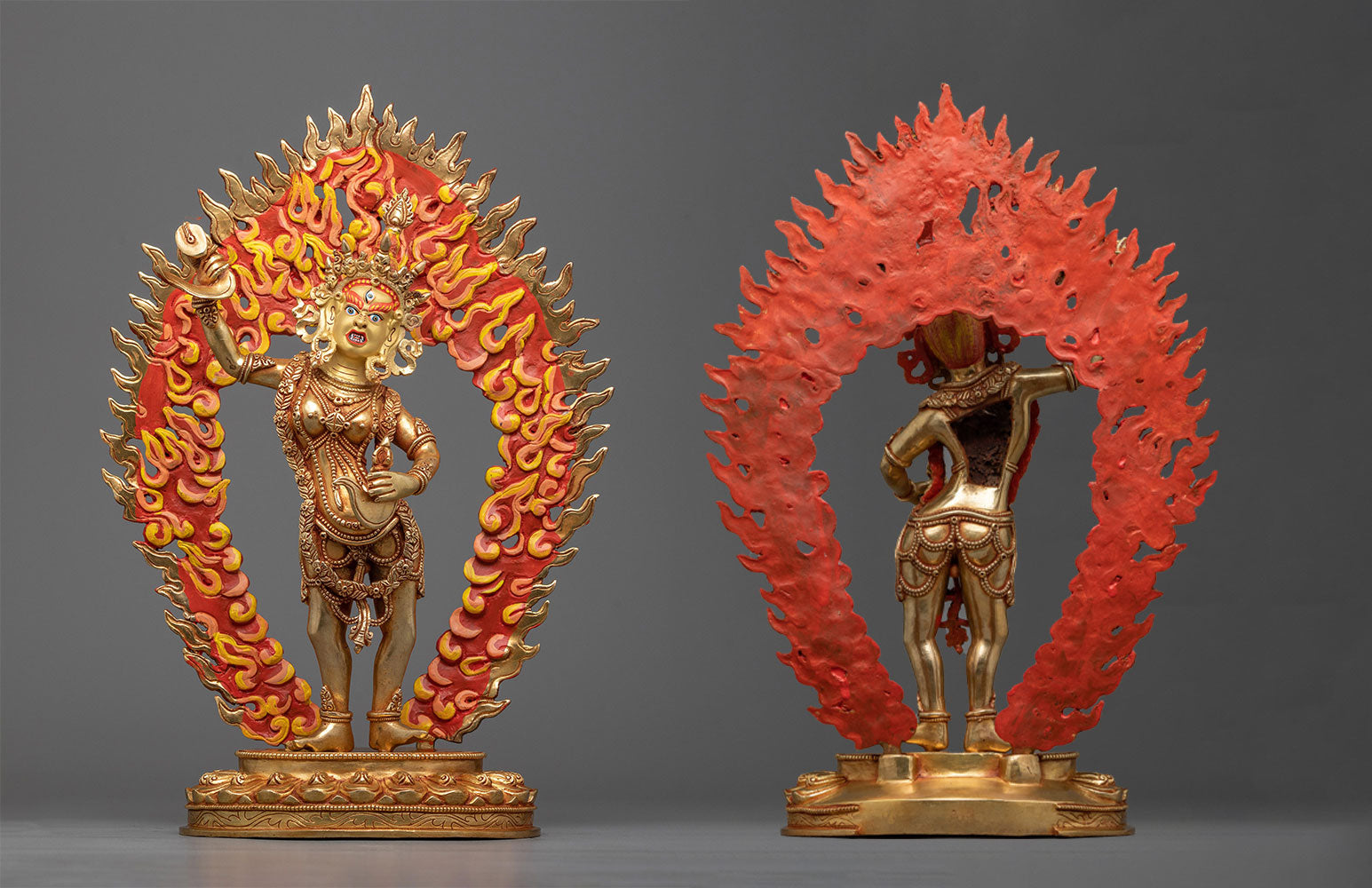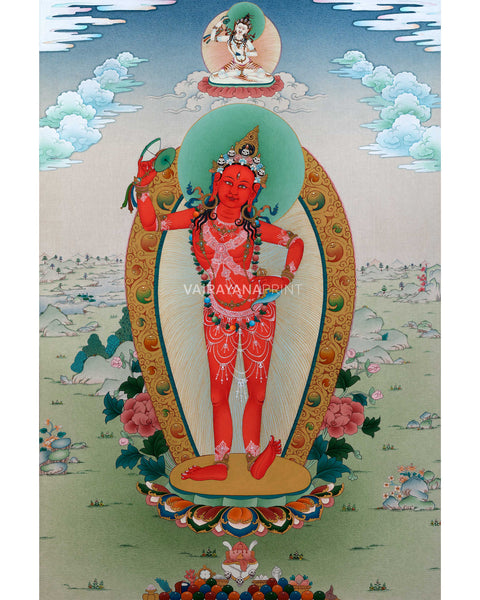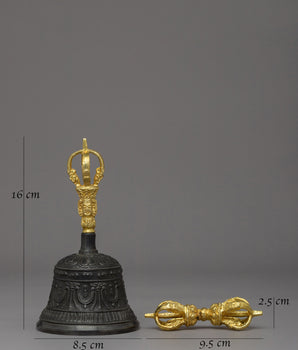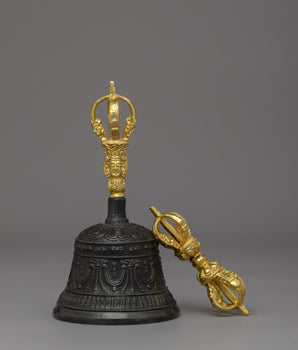The Spiritual Radiance of Yumka Dechen Gyalmo: A Guide to Buddhist Bliss
Within Tibetan Buddhism, Yumka Dechen Gyalmo, known as the "Queen of Great Bliss," commands reverence as a potent deity. She epitomizes the divine feminine, embodying wisdom and compassion. Worshipping her holds profound importance for those on the path to enlightenment. This in-depth examination reveals the origins, iconography, practices, and profound influence that the deity ahs extended has exerted on Tibetan Buddhism.
Key Takeaways
- Yumka Dechen Gyalmo is a revered deity in Tibetan Buddhism, embodying the divine feminine aspect of wisdom and compassion.
- She is known as the "Queen of Great Bliss" and is associated with profound transformative practices.
- Her iconography includes her blue color, peaceful demeanor, and symbolic attributes like the lotus and the vajra.
- Devotees engage in mantras, prayers, offerings, and rituals to connect with their divine energy.
- Her worship plays a significant role in Tibetan Buddhism, aiding practitioners on their spiritual journey.
The Origins of Yumka Dechen Gyalmo

Source: Termatree (Yumka Dechen Gyalmo Statue)
Historical Origins
Yumka Dechen Gyalmo traces her roots to ancient Tibetan and Himalayan traditions, where indigenous beliefs revered female deities associated with fertility, abundance, and protection. These early traditions emphasized goddesses embodying the nurturing and life-giving qualities of the divine feminine.
Integration into Buddhism
As Buddhism expanded and evolved in Tibet, it assimilated elements from the indigenous Bon religion and local spiritual practices. This syncretic process gave rise to unique Tibetan Buddhist deities, including the worship of this deity.
Despite her indigenous origins, she seamlessly integrated into the rich tapestry of Tibetan Buddhism, becoming a symbol of wisdom and compassion. She is closely linked with the Great Bliss practices (Mahasukha) in Tibetan Vajrayana Buddhism, where practitioners seek enlightenment through the union of wisdom (prajna) and compassion (karuna).
The In-Depth Physical Attributes and Iconography of Yumka Dechen Gyalmo

Click here to view our Yumka Dechen Gyalmo Thangka Print
The esteemed "Queen of Great Bliss" in Tibetan Buddhism, is renowned for her intricate iconography and profound symbolism. Her physical features and symbols convey deep spiritual meanings, making her a pivotal deity for those seeking wisdom and compassion. Let's explore the detailed aspects of Yumka Dechen Gyalmo's physical attributes and iconography.
Physical Attributes
- Blue Complexion: Yumka Dechen Gyalmo is commonly depicted with a serene, radiant, sky-blue complexion, symbolizing transcendental wisdom and purity. In Tibetan Buddhism, the color blue is associated with the concept of emptiness (shunyata), representing the boundless expanse of reality.
- One Face: Unlike some deities with multiple faces, this deity is consistently portrayed with a single, serene face. This singular visage radiates calm and compassion, emphasizing her role as a source of solace and wisdom for devotees.
- Two Arms: In her peaceful form, she is typically shown with two arms, each holding distinct symbolic attributes, representing her ability to extend compassion and wisdom with grace.
Iconography of the Deity
- Lotus Seat: Yumka Dechen Gyalmo is often depicted seated on a lotus flower, serving as her divine throne. The lotus symbolizes purity, enlightenment, and the blossoming of spiritual potential from the challenges of samsara.
- Vajra Crown: Her crown, adorned with a vajra (ritual thunderbolt or diamond scepter), holds profound significance, representing unshakable and indestructible wisdom. It underscores the union of wisdom and compassion within her enlightened state.
- Bodhisattva Attire: She is frequently portrayed in Bodhisattva attire, emphasizing her compassionate dedication to the well-being of all sentient beings. Her robes and adornments symbolize her transcendent nature.
- Mudra (Hand Gestures): Some depictions showcase specific mudras. Her right hand is often extended in the gesture of supreme generosity (varada mudra), symbolizing blessings upon devotees. Her left hand may hold a lotus or vajra, representing the inseparable union of wisdom and compassion.
Symbolic Elements
- The Crown: Yumka Dechen Gyalmo's crown signifies enlightened wisdom and spiritual authority, mastering the dualities of conventional reality.
- The Lotus: The lotus she sits upon symbolizes a potential spiritual awakening amid worldly impurities, akin to the lotus remaining unstained in muddy waters.
- The Vajra: The vajra represents unshakable wisdom and an unwavering commitment to enlightenment, cutting through ignorance and delusion.
Devotional Practices of the Deity
Mantras and Prayers: Devotees recite the Om Tare Tuttare Ture Soha mantra to invoke Yumka Dechen Gyalmo's blessings, fostering compassion and wisdom.
Offerings and Rituals: Devotees make symbolic offerings and perform rituals to honor her, establishing a sacred connection.
Spiritual Significance
Empowering the Divine Feminine: Yumka Dechen Gyalmo's worship empowers the divine feminine within Tibetan Buddhism, inspiring female practitioners in a traditionally male-dominated landscape.
Union of Wisdom and Compassion: As an embodiment of the union of wisdom and compassion, Yumka Dechen Gyalmo inspires devotees to integrate these qualities on the path to awakening.
Yumka Dechen Gyalmo in Tibetan Buddhism
Role in Tibetan Buddhism: Integral to Tibetan Buddhism, particularly in Vajrayana and Great Bliss practices, Yumka Dechen Gyalmo's teachings endure through generations of masters.
Impact on Female Practitioners: Her presence profoundly impacts female practitioners, providing inspiration, empowerment, and spiritual guidance, encouraging women to pursue their spiritual journeys with confidence.
Yumka Dechen Gyalmo, known as the Queen of Great Bliss, embodies the divine feminine essence of wisdom and compassion within Tibetan Buddhism. Her serene iconography, steeped in symbolism and transformative practices, serves as wellsprings of inspiration, fostering devotion and inner growth among practitioners.
In the act of worship, devotees aspire to internalize the virtues of wisdom and compassion, drawing themselves nearer to the enlightening path. Her presence is a poignant reminder of the sacred equilibrium between masculine and feminine energies within the spiritual journey.
As Tibetan Buddhism undergoes evolution and adaptation, Yumka Dechen Gyalmo is a guiding beacon for all. Her teachings emphasize the inseparable unity of wisdom and compassion as indispensable components in the journey toward spiritual awakening. Furthermore, she plays a pivotal role in championing the empowerment of the divine feminine within Buddhism, resonating as a symbol of balance and unity for practitioners navigating the complexities of their spiritual paths.










